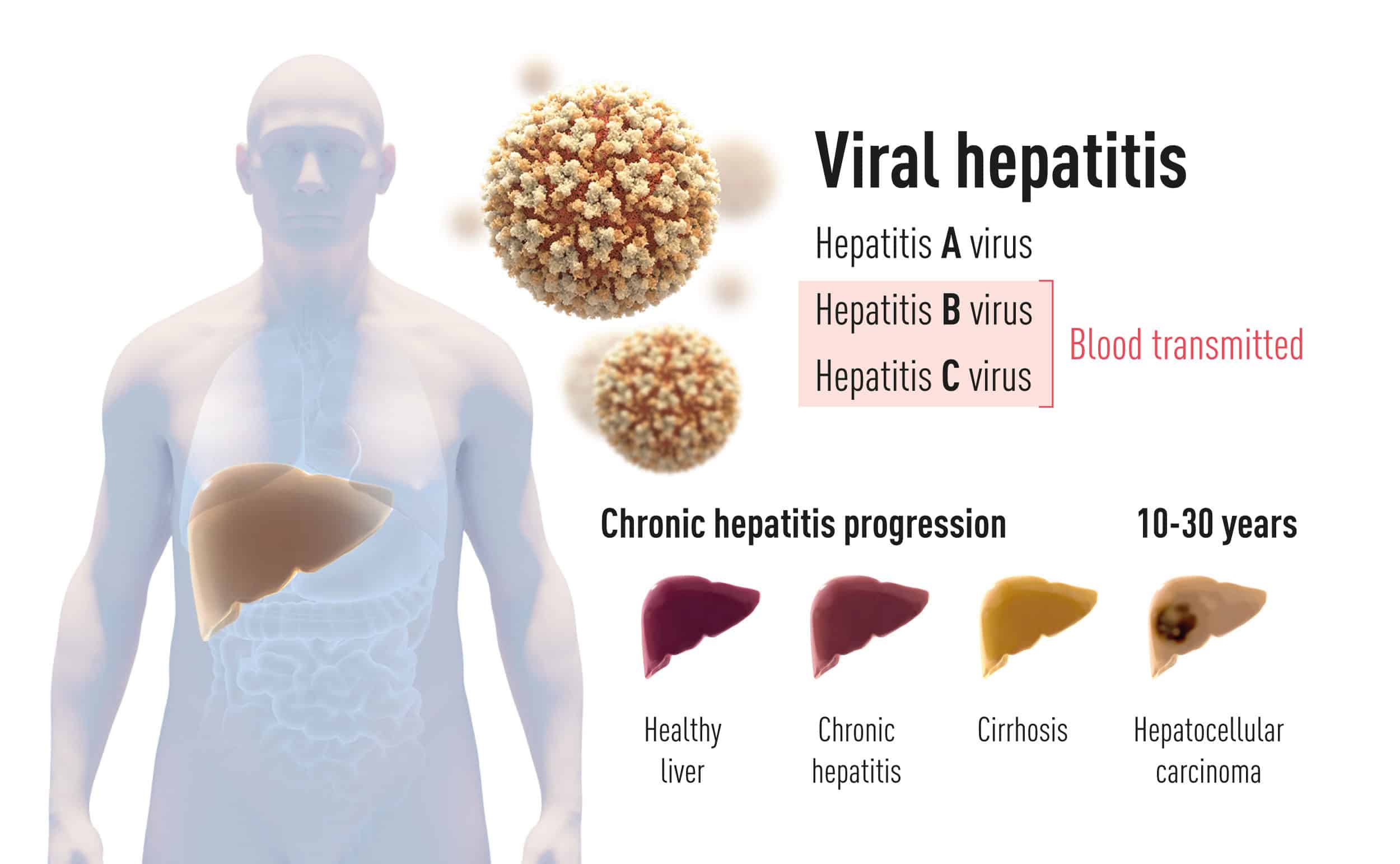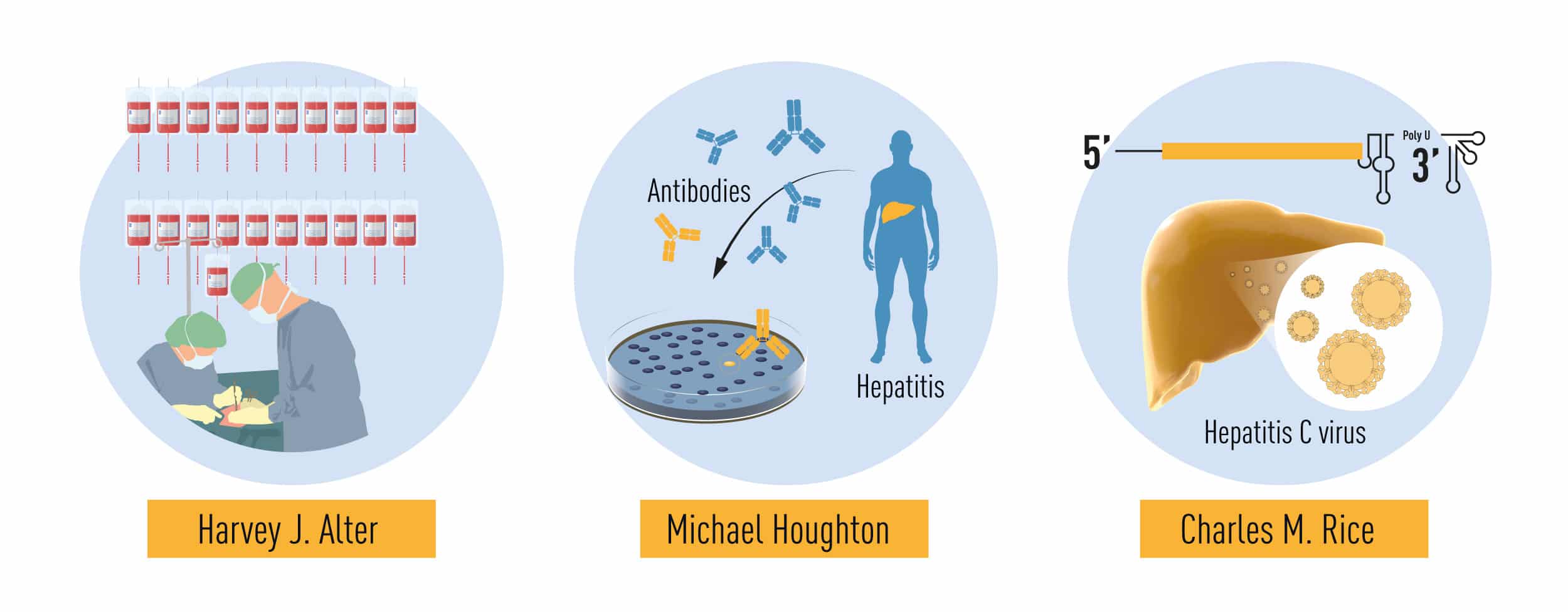Noble Prize in Medicine 2020
Three scientists, Harvey J. Alter, Michael Houghton, and Charles M. Rice, haven been jointly awarded the Nobel Prize in Physiology or Medicine for the year 2020 for the discovery of the Hepatitis C virus, by the Nobel Assembly at Karolinska Institutet.
In the fight against a major health concern worldwide that causes liver cancer and cirrhosis in humans, the blood-borne hepatitis disease, a major contribution has been done by these three scientists. They identified a novel virus, the Hepatitis C virus through their groundbreaking discoveries. The identification of Hepatitis A and B viruses was significant prior to their work. However, there was no explanation for the majority of blood-borne hepatitis. The discovery of the Hepatitis C virus led to the development of blood tests and new treatment drugs that have saved millions of lives as the reason behind the unresolved cases of chronic hepatitis was decoded.
Hepatitis – A Global Threat to Human Health
Hepatitis or liver inflammation is mainly caused by viral infections, and also through other important causes such as autoimmune disease, alcohol abuse, and environmental toxins. It was confirmed that there are majorly two types of infectious hepatitis in the 1940s. The
first type which usually has a less long-term impact on the infected person, and is spread by polluted water, is named hepatitis A. The other one has a more severe threat as it can cause a chronic condition, with the development of cirrhosis and liver cancer, and spreads via blood and bodily fluids. In this form of hepatitis, before the onset of serious complications, healthy individuals could be silently infected for many years as the disease is insidious. Blood-borne hepatitis is a global health concern on a scale comparable to HIV-infection and tuberculosis as it is associated with significant morbidity and mortality causing more than a million deaths per year worldwide.
An Unidentified Contagious Agent
Identifying the causative agent is the key to effective treatment against infectious diseases. A scientist figured out in the 1960s that one form of blood-borne hepatitis was triggered by a virus that then named as the Hepatitis B virus, and the scientists Baruch Blumberg was awarded the Nobel Prize in Physiology or Medicine in 1976 for this discovery, as this led to the development of diagnostic tests as well as an efficient vaccine.
Back then, Harvey J. Alter was researching the incident of hepatitis in people that had obtained blood transfusions, at the US National Institutes of Wellness. Although blood tests for the newly-discovered Hepatitis B infection decreased the number of instances of transfusion-related hepatitis, a large number of cases remained the same, which was demonstrated by Alter and his coworkers. For the Hepatitis A virus disease, tests were established by now, and then it came to be evident that the reason for these unknown cases of hepatitis was not Hepatitis A virus.
A large number of those receiving blood transfusions developing chronic hepatitis as a result of an unidentified contagious agent was greatly concerning. Chimpanzees are the only susceptible host for hepatitis besides humans, and so, Alter and his colleagues showed that the blood from these hepatitis patients might transmit the disease to chimpanzees. Additionally, subsequent research studies showed that the unidentified contagious agent had the attributes of a virus, thus, a new, distinct form of chronic viral hepatitis was defined through Alter’s methodical investigations. The name “non-A, non-B” hepatitis was given to this mysterious illness.
The New Discovery
For over a decade, the virus evaded isolation despite all the conventional methods for identifying virus were put to use, and thus, the identification of the novel virus was now a highly prioritized. The arduous work needed to isolate the genetic sequence of the virus was taken up by Michael Houghton, who was working for the pharmaceutical firm Chiron. From the nucleic acids found in the blood of an infected chimpanzee, Houghton and his colleagues created a collection of DNA fragments. Most of these fragments originated from the genome of the chimpanzee itself, but the scientists predicted that some would be derived from the unidentified virus causing the disease. The researchers made use of patient sera to identify cloned viral DNA fragments inscribing viral proteins, assuming that the blood extracted from hepatitis patients would have antibodies against the virus. One positive clone was identified following a comprehensive search. Through more research, it was identified that from a new RNA virus from the Flavivirus family, this clone was derived. It was then given the name Hepatitis C virus, and this virus was strongly implicated as the missing agent by observing the presence of antibodies in chronic hepatitis patients.
It was yet to be determined if the virus alone cause hepatitis and this vital piece of the puzzle still missing. It was to be investigated if the cloned virus could replicate and lead to causing the disease, in order to answer this question. A previously uncharacterized region at the end of the Hepatitis C virus suspected to be important for virus replication was noted by a researcher at Washington University in St. Louis, Charles M. Rice, along with other groups working with RNA viruses. In isolated virus samples, genetic variations were also observed by Rice and he stated that some of them might hamper virus replication, according to his hypothesis. The Hepatitis C virus’s RNA variant lacking the inactivating genetic variants and having the newly defined region of the viral genome was created by Rice by the means of genetic engineering. Pathological changes similar to those seen in humans with chronic disease were observed along with the virus being detected in the blood when this RNA was injected into the liver of chimpanzees. This was the final evidence that unknown occurrences of transfusion-mediated hepatitis could be caused by the Hepatitis C virus alone.
Importance of this Discovery
In the current fight against viral diseases, the Nobel Laureates’ discovery of the Hepatitis C virus is a historic breakthrough.

Now, this discovery has made it possible to have hugely accurate blood tests for the virus and these have put an end to post-transfusion hepatitis in many parts of the world, substantially improving worldwide wellness. The fast advancement of antiviral medicines aimed at hepatitis C was made possible with their discovery. The disease can now be cured for the first time in history. This has raised hopes of eliminating the Hepatitis C virus entirely. In order to accomplish this objective, international efforts enabling blood testing and making antiviral medicines accessible worldwide will certainly be needed.
Source
Noble Prize in Medicine 2020, Noble Prize in Medicine 2020, Noble Prize in Medicine 2020






























